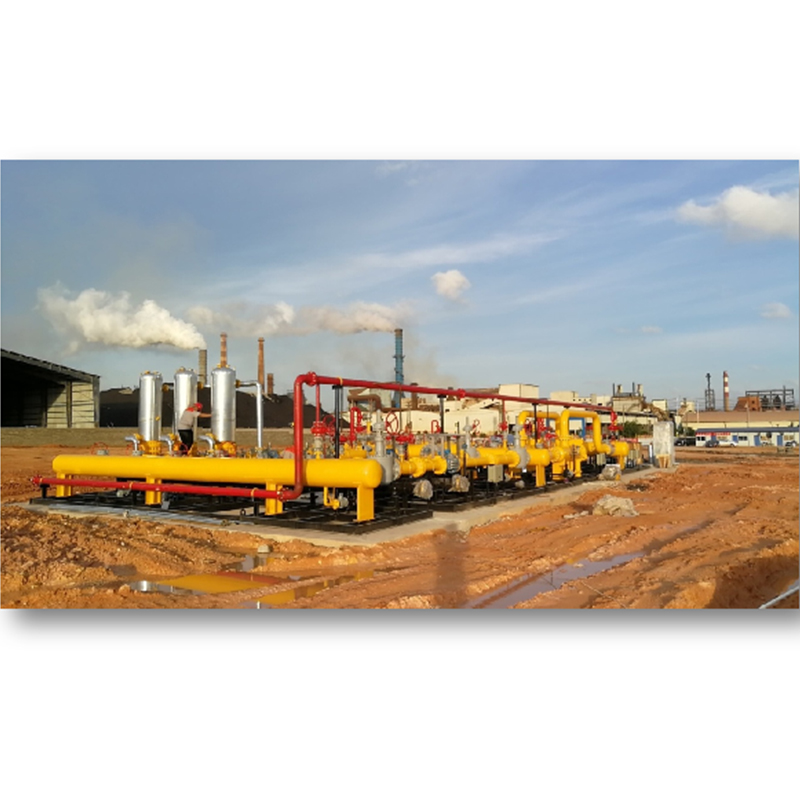
8 月 . 15, 2024 04:55
Back to list
Understanding the Functionality and Importance of Gas Pressure Regulation in Various Applications
Understanding Gas Regulators Essential Components for Safe and Efficient Gas Usage
Gas regulators are critical devices used in various industries, including residential, commercial, and industrial settings, to control the pressure of gas supplied from a source to end-use applications. The primary function of a gas regulator is to maintain a consistent output pressure, regardless of fluctuations in input pressure. This ensures safety, efficiency, and reliability in the usage of gases, whether for heating, cooking, or powering machinery.
How Gas Regulators Work
Gas regulators operate using a straightforward but effective principle. They consist of a diaphragm, which responds to changes in pressure. When gas enters the regulator, the diaphragm moves based on the pressure differential between the inlet and outlet. If the input pressure is higher than desired, the diaphragm adjusts to restrict the flow, thereby reducing the output pressure to a set level. Conversely, if the input pressure drops, the diaphragm will allow more gas to flow, maintaining the required output pressure.
Most gas regulators are adjustable, allowing users to set the output pressure as needed. This feature is particularly important in applications where precise gas flow is essential, such as in laboratories or specialized industrial processes. Regulators can be designed for various gases, including natural gas, propane, and compressed air, each requiring specific materials and construction to handle the properties of the respective gas safely.
Importance of Safety Features
Safety is a major consideration in the design of gas regulators. Many modern regulators come equipped with built-in safety features, such as overpressure protection and relief valves. These components help prevent dangerous situations that could arise from excessive pressure build-up, which might lead to leaks or explosions.
gas regulator

Additionally, installing a regulator easy to access and operate can streamline maintenance and inspections. Regular checks are vital to ensure that the regulators are functioning correctly and safely. Users should also be trained to recognize any signs of malfunction, such as hissing sounds, unusual pressure readings, or gas odors.
Applications of Gas Regulators
Gas regulators are found across a wide array of applications. In residential settings, they ensure that natural gas or propane fed into homes for heating and cooking appliances maintains the proper pressure. In commercial kitchens, gas regulators play a crucial role in enabling consistent cooking temperatures, which is vital for food safety and quality.
In industrial applications, gas regulators are often used in welding, cutting, and chemical manufacturing processes. These settings demand precise control over gas flow to ensure optimal operational efficiency and safety. Additionally, laboratories use specialized gas regulators to manage gases used in experiments, where even minor pressure differences can lead to significant variations in results.
Conclusion
The significance of gas regulators in modern society cannot be overstated. They are silent guardians in our homes, businesses, and industries, ensuring that the gases we use are handled safely and effectively. As technology advances, innovations in gas regulation will continue to enhance safety and efficiency in gas usage. Understanding the fundamentals of gas regulators not only helps users optimize their applications but also fosters a culture of safety and responsibility in gas handling practices. Whether for cooking, heating, or industrial processes, gas regulators are indispensable tools that contribute to our quality of life and the efficiency of our operations.
Latest news
-
Unlocking The Quality Gas Pressure ReducersNewsNov.01,2024
-
The Role of Gas Pressure Reducing StationsNewsNov.01,2024
-
The Importance and Functionality of Safety Relief ValvesNewsNov.01,2024
-
The Essential Role of Safety Valves in Natural Gas ApplicationsNewsNov.01,2024
-
The Essential Role of Gas Pressure RegulatorsNewsNov.01,2024
-
Enhance Your Premium Gas FiltersNewsNov.01,2024

